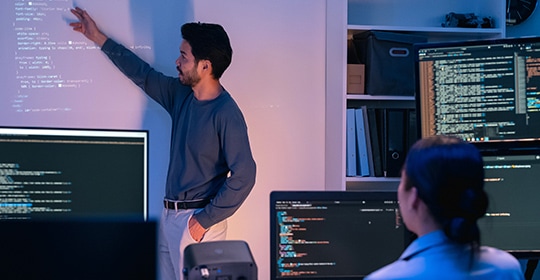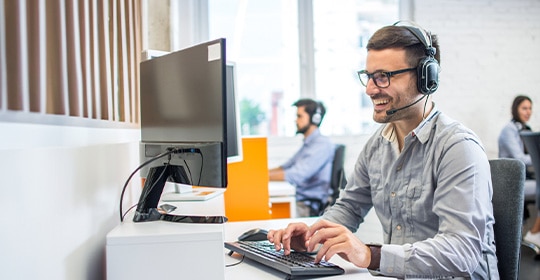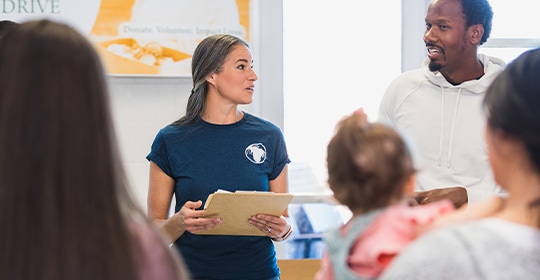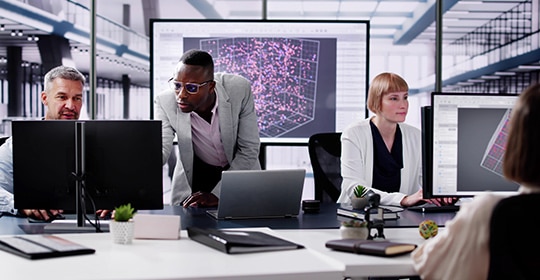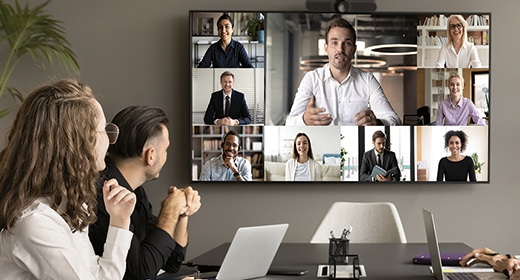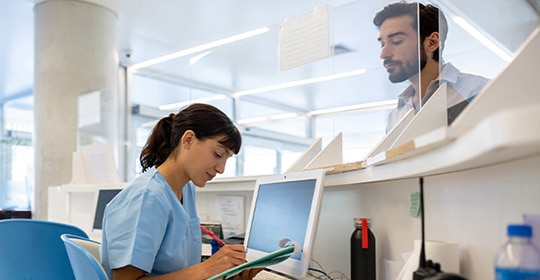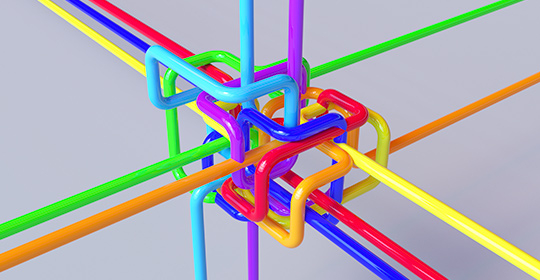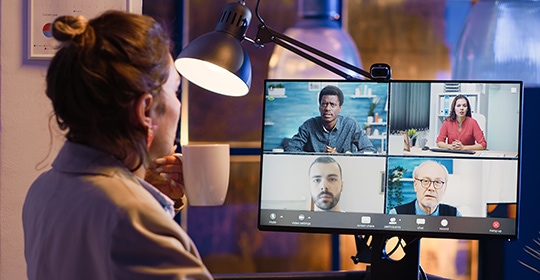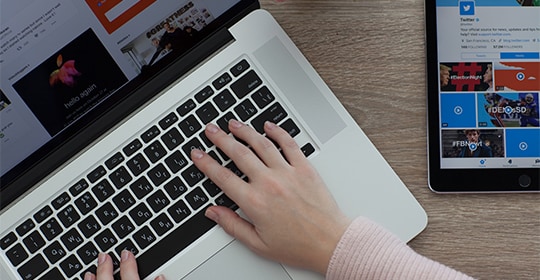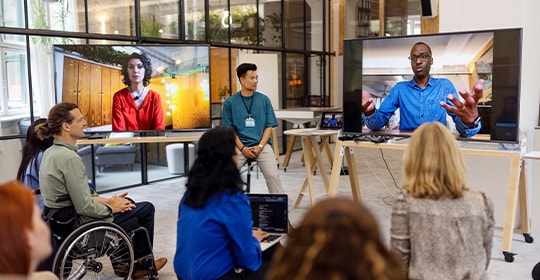Research everything IT
1 - 24 of 139
Sort By:
View:
Dec 23, 2025
Digital Workspace
Empowering Hybrid Collaboration: Logitech Solutions for the Modern Workplace
Article
3 min
Logitech has led the way with technology innovations that support modern workers in a variety of work environments.
Dec 15, 2025
Digital Workspace
Why Culture, Not Code, Determines AI Success
Article
5 min
AI succeeds when organizations focus on people, not mandates. Explore how to drive adoption with clear goals, strong governance and pilot-led experimentation that delivers real business outcomes.
Dec 12, 2025
Digital Workspace
Four Trends to Watch in 2026 as Workplace Technology Evolves
Video
3 min
By leaning into these new developments, organizations can set themselves up for success.
Dec 09, 2025
Digital Workspace
How To Modernize Your Customer Contact Center To Meet Evolving Expectations
Article
5 min
AI-enhanced platforms, customer contact centers are rapidly evolving to make agents more productive and to provide a seamless customer experience.
Dec 05, 2025
Digital Workspace
How Workplaces — and the Technology That Supports Them — Have Evolved
Article
5 min
IT and business leaders must work strategically to meet employee expectations and reduce friction in the modern workplace.
Nov 28, 2025
Digital Workspace
Creating Seamless Personalized Journeys Across Every Channel
Webinar
1 min
Discover how to create a customer journey that makes every touchpoint feel effortless and human.
Nov 05, 2025
Digital Workspace
How Nonprofits Can Overcome Year-End Fundraising Challenges With IT Solutions
Article
4 min
Discover how nonprofits can tackle year-end fundraising with strategic IT solutions. From cloud collaboration to data security, learn actionable steps to streamline operations, deepen donor engagement and drive mission success during Q4.
Oct 31, 2025
Digital Workspace
A Customer Experience that Blends AI and the Human Touch
Article
10 min
Discover how CDW helps organizations implement AI responsibly — balancing automation with human empathy, building strategic roadmaps and managing AI solutions that enhance customer experience and ROI.
Oct 23, 2025
Digital Workspace
3 Affordable, Simple Strategies to Transform Hybrid Learning in Higher Education
Article
4 min
Higher education institutions are under pressure to deliver seamless HyFlex learning experiences while managing tight budgets. Discover how consistent sound, video and collaboration platforms can reduce complexity and cost while elevating learning.
Oct 08, 2025
Digital Workspace
Preparing for the End of Android 10 and Key Video Conferencing System Impacts
Webinar
2 min
Learn how to navigate Android 10’s end of life, upgrade your video conferencing systems and future-proof your collaboration technology.
Oct 02, 2025
Digital Workspace
How Dell PCs and Accessories Pave the Way for the Future of Work
Article
4 min
From AI tools to high-powered cameras, Dell workplace solutions enhance collaboration, productivity and innovation.
Sep 30, 2025
Digital Workspace
New CDW Research: How Organizations Optimize the Digital Experience
White Paper
14 min
The modern workplace requires organizations to deliver an excellent user experience while overcoming challenges related to security and integration.
Sep 15, 2025
Digital Workspace
How Digital Workplace Transformation Drives Modern Collaboration
White Paper
14 min
With the right collaboration tools, organizations can deliver a user experience that increases productivity and efficiency.
Aug 14, 2025
Digital Workspace
How Ambient Voice Tech is Revolutionizing Healthcare
Article
4 min
Discover how ambient voice technology (AVT) is transforming healthcare. Enhance patient care, reduce clinician burnout, and improve efficiency with AI-driven, real-time solutions shaping the future of medical services.
Jul 29, 2025
Digital Workspace
From Chaos to Clarity: Designing Equitable Experiences for Employees
Article
4 min
Creating an equitable digital experience for all employees is pivotal. By aligning tools, people and processes effectively, your organization can transform chaos into clarity, ensuring that everyone has the best resources needed to thrive.
Jul 18, 2025
Digital Workspace
3 Contact Challenges Solved by CDW’s Contact Directory Application for Webex
Article
4 min
Searching for better ways to connect with the right people at the right time? CDW’s Contact Directory Application for Cisco Webex boosts communication efficiency, reduces downtime and enhances satisfaction all from one streamlined place.
Jun 27, 2025
Digital Workspace
How CPaaS Improves the Customer Experience
White Paper
13 min
By streamlining customer support channels, Communications Platform as a Service solutions help organizations cut costs and boost consumer satisfaction.
Jun 03, 2025
Digital Workspace
How to Empower Your People With AI
Article
3 min
AI evolution is a revolution for human-centered innovation. Here’s how to put people first in the age of intelligent technology.
Jun 02, 2025
Digital Workspace
SaaS Can Power Productivity When It Matters Most
Article
3 min
With the right support, SaaS productivity solutions empower IT leaders to manage change and emerge stronger on the other side.
May 09, 2025
Digital Workspace
Embracing AI and Cloud Solutions for Optimized Collaboration
Article
5 min
From improving collaboration in virtual meetings to optimizing contact center operations, artificial intelligence and cloud technologies can transform the way your organization works to meet customer needs and business goals seamlessly.
Apr 29, 2025
Digital Workspace
Support and Scale Your Apple Deployment With CDW’s MacOS Advisory Service
Article
3 min
MacOS requires specialized approaches to device management, security configurations and user experience optimization.
Apr 23, 2025
Digital Workspace
2025 Workforce Strategies Every Nonprofit Leader Needs to Know
Article
4 min
Discover essential workforce strategies transforming the nonprofit sector in 2025. From hybrid work to AI-driven hiring, inclusivity and well-being, learn actionable steps to attract, retain and empower talent while driving mission success.
Mar 31, 2025
Digital Workspace
Building a Foundation for Smarter Device Management With Windows 11 Pro Upgrade
Use Case
3 min
During rapid growth, managing devices is no small task. Discover how CDW partnered with a civil engineering and consulting firm to streamline device management, strengthen security and prepare for future expansion, including Windows 11 updates.
Mar 31, 2025
Digital Workspace
Cost-Effective Generative AI Integration in Google Workspace
Article
3 min
Discover how CDW enabled a mortgage company to enhance productivity with Gemini for Google Workspace, delivering seamless integration and securing budget-friendly solutions.

